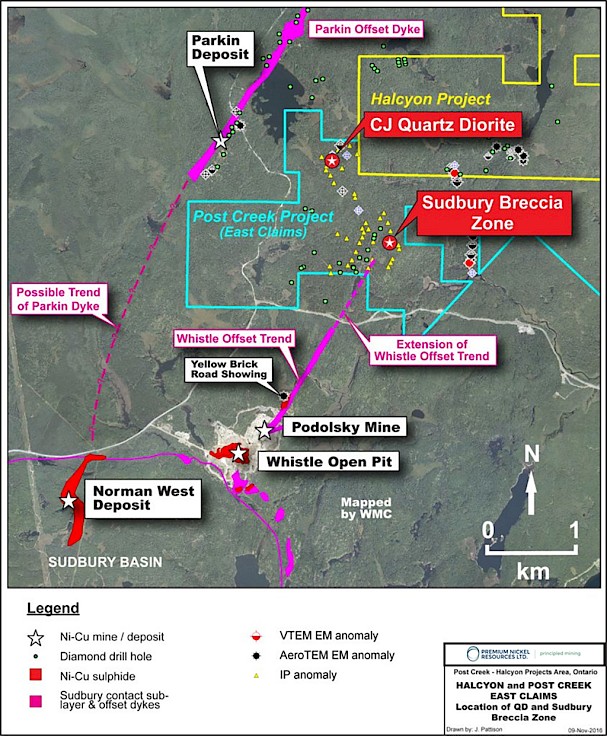The Post Creek and Halcyon properties are situated in the northeastern part of the Sudbury Structure, approximately 2.5km northeast of the Sublayer-Footwall contact of the SIC. The SIC is considered to be a product of a meteorite impact that occurred at 1.85 Ga and represents a long-established world class nickel sulphide district. Ni-Cu-PGE mineralization occurs in several settings including Sublayer, Offset Dyke and Footwall deposits.
The PNRL properties are underlain by Archean metavolcanic and granitic rocks and Proterozoic metasedimentary rocks which are locally cross-cut by Proterozoic diabase dykes. Quartz Diorite (QD) and Sudbury Breccia, which are important SIC-related lithologies known to host Ni-Cu-PGE deposits, have been identified by our team on the Post Creek property. A historic sample assay of 0.83% Ni, 0.74% Cu, 0.07% Co and 3.5g/t Au+Pt+Pd.was returned from angular float. Although only minor amounts of disseminated and blebby sulphides have been identified thus far in these units, they both represent significant exploration targets.
The “CJ Quartz Diorite”, discovered by prospector Cecil Johnson in 2011, is located 3km NNE of KGHM’s Podolsky Deposit and appears to lie along a trend which is displaced from, but sub-parallel to, the strike of Whistle Offset (Figures 2). It is considered to be a new occurrence versus an extension of the Whistle Offset.
New occurrences of Sudbury Breccia were identified in outcrop and trenches in 2016 and 2018 define an irregular shaped area 1300 m by 650m in size. The breccia zone is located 2km NE of Podolsky Deposit and lies along an extension of the Whistle Offset trend.



